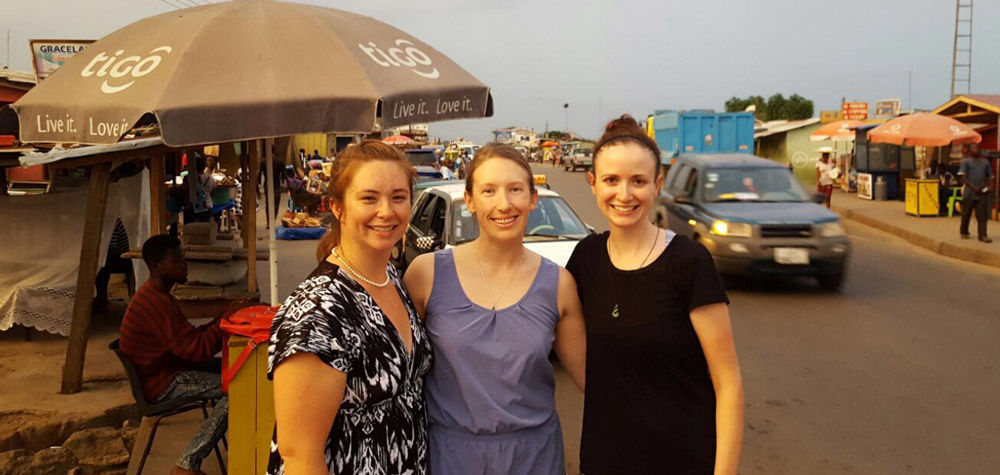hen surgeons Kate Smiley, Marta McCrum and Value Engineer Cindy Spangler traveled to the Volta River Authority Hospital (VRAH) in Ghana, they weren’t sure what they would find. VRAH is regionally known for their quality and safety, and the team wondered why. Was it their culture? Their leadership? The patient population?
What they found surprised them
Smiley recently finished her research fellowship at the Center for Global Surgery. In April 2017, Smiley, McCrum and Spangler conducted a two-week investigation at VRAH. In their extended trip to the gemba, the team observed 10 surgical procedures and surveyed both employees and patients. They observed that VRAH is highly reliable in their adherence to WHO best practices—100% adherence in all observed cases.
The key? The VRAH team exhibits a high degree of psychological safety, speaking up without fear of retribution, which is a characteristic common among strong safety cultures.
How do they (and how can we) promote psychological safety?
Lesson #1: “Call me Kate.”
Smiley comments, “From top to bottom, VRAH has a culture that allows anyone to speak up if they see something unsafe happening. They really encourage prioritizing individual patient safety.”
She outlines a simple practice that promotes willingness to speak up. “One of the things that I’ve seen done here [U of U Health] is going by first names in the operating room. I tell everyone in the OR to ‘call me Kate.’ I think it becomes easier for the scrub tech to say “you know Kate, I think that the piece of equipment just slipped and burned the patient.’ I recognize that I’m in a leadership position, and so I have to take the first step in asking the team to use my first name.”
Why does using first names make such a big difference? Smiley comments, “It changes the slant of the hierarchy. People who are lower in the hierarchy really feel like they are a valued and safe member of the team. It makes them feel like everyone’s goal is patient safety.”
Lesson #2: Openly Share Mistakes and Focus on Improvement
Every month, VRAH joins other regional hospitals to review mortality cases. They candidly discuss if and how the hospitals' processes contributed to a patient’s death. For example, how fast did the patient receive initial treatment in the emergency department? What was the nature of the post-surgical care? After the hospitals openly share best practices, they return and try to lead improvement at their own facilities. Cindy Spangler remarks, “It was interesting to see how everyone had a vested interest in getting better together. Everyone has something to teach and something to learn. Psychological safety begins with being willing to share.”
We learned of Dr. Smiley’s improvement work at the first annual Department of Surgery Value Symposium this past July 12. Her project was one of three selected and two to actually be profiled on Accelerate. We applaud these efforts to share and spread best practices in delivering high value health care within our community and beyond.
Kate Smiley
When a medical error occurs, every provider needs to know how to share this information with patients and families. Timely and clear disclosure builds trust and reduces the risk of litigation. Follow this practical strategy to guide your conversation, provided by an interdisciplinary team of providers and risk managers.
Chrissy Daniels shares three powerful insights from Dr. Danielle Ofri’s new book, “What Patients Say, What Doctors Hear.” Ofri combines research and storytelling to explain the power of patient-doctor conversation and the common pitfalls that undermine connection and trust. She concludes the ear may be the most powerful tool in medicine.
Patients will ask three things of us over the next decade of health care improvement: help me live my best life, make being a patient easier, and make care affordable. To meet those needs health care must shift—from organizing around a patient’s biology to understanding the patient’s biography.
